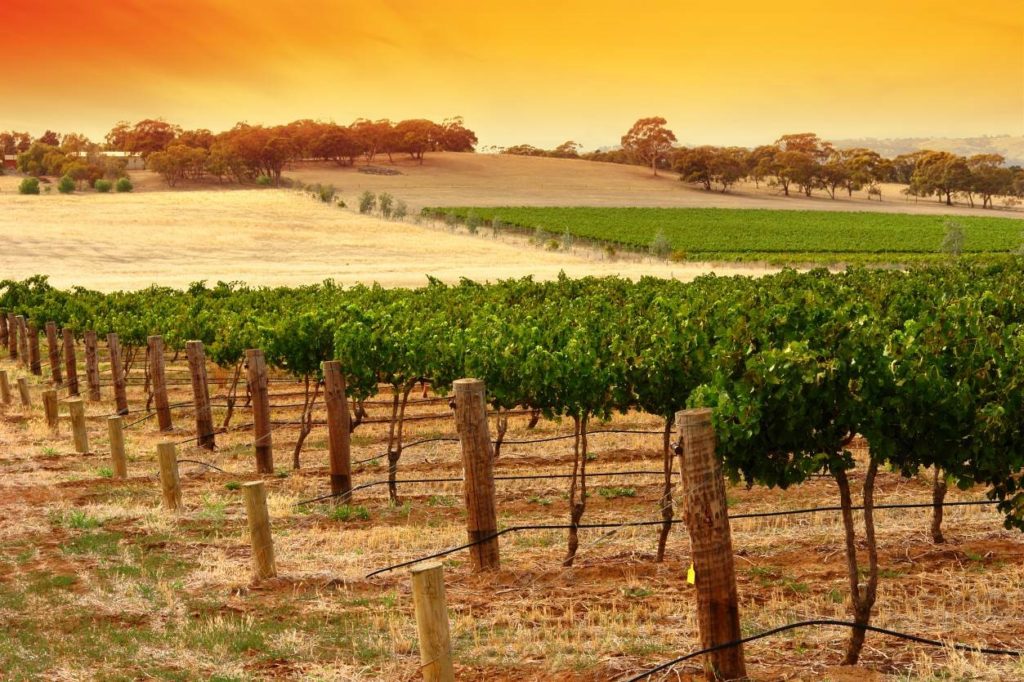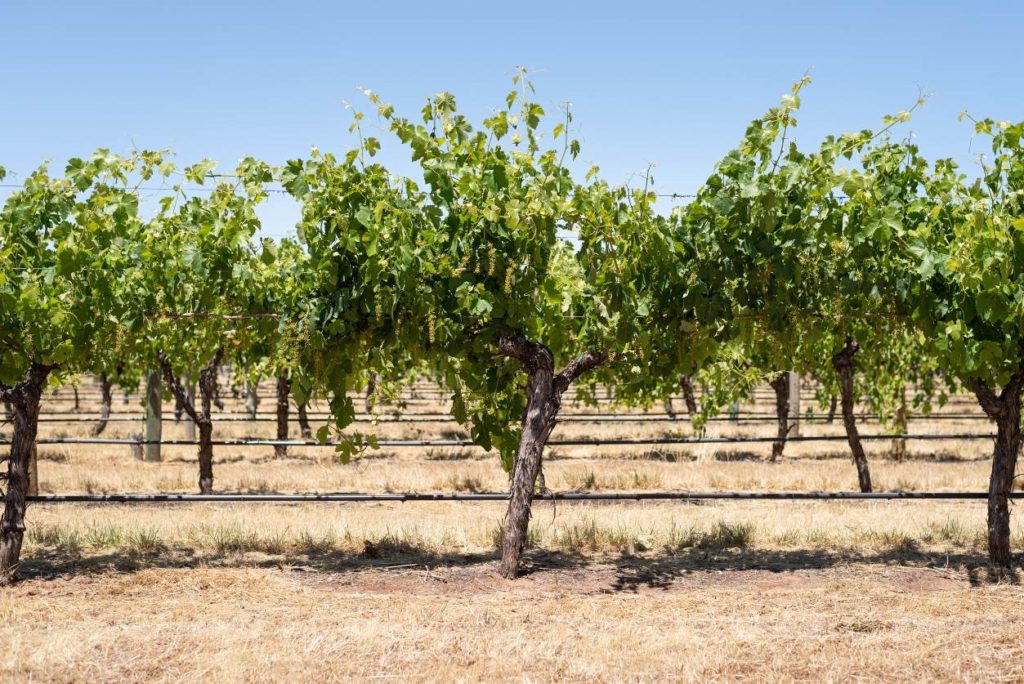
A deep dive into South Australia: Barossa Valley wine


Barossa Valley is famous for its voluptuous Shiraz. However, the sub-region of South Australia presents a more complex picture than initially thought; South Australia’s biggest quality wine district is far from a one-trick pony. Riesling is also a star variety in the Barossa Valley wine region, with higher altitude Eden Valley making floral and crisp fine wine. White Rhône varieties – such as Marsanne and Viognier – are also superb in South Australia’s cooler sites. Barossa is a district where all three wine colours matter significantly.
The Australian wine industry, although young, has much history. Here, we explore some of the viticultural history of Barossa Valley, in south Australia and why it is ideally suited for producing powerful Shiraz and even floral Riesling in the Eden valley
Click on a link to jump to that section:
Climate, history, geography and terroir
The region is very close to the city of Adelaide: Barossa is just 35 miles drive northeast of the state capital. The Barossa Valley wine region follows the North Para River for almost 20 miles before adjoining eastwards into the neighbouring Eden Valley. Barossa’s wine community used to regard the Eden Valley as an eastern extension of their zone; however, both areas have been certified as independent Geographical Indications (GIs) for over 20 years.
Viticulture has been an essential part of the economic and social life in South Australia for over a century. German-speaking immigrants from eastern Europe were attracted to the Barossa region’s benign climate in the 1800s, creating vineyard sites that have stood the test of time. Their culture and traditions are still in evidence today – Silesian migrants were responsible for popularising Riesling, planted in higher altitude Eden Valley, and Shiraz in South Australia.
The Shiraz grape chiefly propelled Barossa to international renown in the 20th century, The wine region’s most precious resource is undoubtedly its ungrafted Shiraz bush vines, some of which are over 100 years old, with the first vines being planted in 1842. Remarkably, many of these centenarian parcels are owned by family-owned businesses rather than corporate brands. Barossa Shiraz remains one of the country’s most famous exports, adored by wine lovers worldwide.
Vineyard sites on the valley floor enjoy a hot and dry climate, with temperatures routinely exceeding 35°C in the summer; however, Barossa’s deep-rooted, unirrigated vines are well-adapted to these conditions. They yield concentrated and potent Shiraz wines, brimming with red and black fruits.
Although Barossa summers are typically hot and dry, elevation can help moderate the summer’s extreme heat. Higher-altitude sites are significantly cooler due to the diurnal temperature variation that slows down ripening in the fruit, keeping acidity at desirable levels. Earlier harvests are increasingly practised in the valley for that same reason.
Australia’s leading producers are avid supporters of the Barossa Grounds project; geologists have been studying Barossa’s diverse soils (including clay-limestone, sand and mineral-rich dark loam) in order to precisely delineate any subzones.
Key grape varieties
Red grape varieties
- Shiraz – Barossa Valley Shiraz offers a broad range of wine styles, from rich and full-bodied elixirs to lighter red wine that emulates the peppery finesse of the Syrah (Shiraz) from Northern Rhône. Elevation, soil and winemaking are the critical points of differentiation here.
- Cabernet Sauvignon – this iconic Napa Valley and Bordeaux variety thrives on the brown loamy soils of Barossa, producing darkly spiced wines with ripe tannins and good acidity.
- Grenache – another Rhone variety performs very well in the region’s dry climate: Grenache, Syrah (Shiraz), and Mourvedre blends (GSM) are one the greatest offerings from the Barossa Valley wine industry. Grenache brings spicy potency and alcohol to the final blend.
- Mourvedre – the star red grape of Bandol in Provence has made a home in Barossa Valley. It yields perfumed and silky wines with aromas of blueberries and violets.
White grape varieties
- Viognier – these grape yield silky smooth wines in the Barossa Valley, celebrated for their open bouquet and flavours of apricot and vanilla on the mid-palate. The variety is often blended with Marsanne and/or Roussanne.
- Chardonnay – Barossa Chardonnay varies a great deal, from the powerful wines of the valley floor to the more subtle interpretations made at higher elevations. Fine wine from the Chardonnay grape can improve for at least five years in bottle, offering tertiary aromas of buttered toast and honeysuckle.
- Semillon– the iconic partner of Sauvignon Blanc in Bordeaux and the Margaret River, is the Semillon grape. In Barossa, this variety includes a unique, pink-skinned mutation that yields tropically-scented and vibrant white wine in the region.
- Riesling – Barossa Riesling is found chiefly in the Eden Valley, Barossa’s, higher hilly next-door neighbour. Riesling, planted on warmer terroirs, like in Barossa, matures very quickly, offering aromas of butter, kerosene and lime cordial. The best examples merge fruit expressions with lightness and finesse.

Key wine labels
The Barossa Valley is home to a great pantheon of globally-renowned brands. Chief among these is Penfolds, founded by Christopher Rawson Penfold in 1844. Now owned by Treasury Wine Estates, Penfolds is the one of Australia’s most iconic and collectable red wine: Grange. It is based on 60-120-year-old Shiraz bush vines, dry-farmed and harvested at very low yields to maintain quality. The result is a gloriously luxurious and profoundly concentrated wine which can improve in bottle for decades.
Peter Lehmann, was responsible for popularising old vine Shiraz in the 1980s and increasing the demand for local wine grapes. Torbreck, meanwhile, is another name associated with powerful and luxurious Australian Shiraz with timeless style. Ben Glaetzer is a boutique winery that produces outstanding premium Barossa Shiraz. A top example is Amon Ra, with pronounced dark berry and spicy aromas over ferrous and yeasty notes.
What does the Barossa Valley have to offer?
Barossa offers an eclectic range of wine styles, price points, and grape varieties. No matter what your preference or inclination, you’ll find something to love here. Barossa, home of luxurious wine icons such as Grange and Hill of Grace, also excels with smaller winery labels, niche wine styles and less renowned grape varieties. World class terroir, winemaking skill and the desire to challenge global perceptions is the Barossa Valley way and it is what makes the region so attractive.
Consumers are spoilt for choice. Barossa can deliver excellent sparkling wine, fragrant rosé, aromatic Viognier, velvety Tempranillo and, of course, rich and full-bodied Australian Shiraz. Many contemporary producers are switching their focus to balance. Such wines, with fresh fruit flavours and moderate ABVs, are delicious and food friendly. They pair brilliantly with almost any dish you care to mention. But one of gastronomy’s most convincing cliches is Barossa Shiraz and rib-eye steak.
Explore our South Australian wines today!
Related pages
An insider’s guide to South Australian wine




